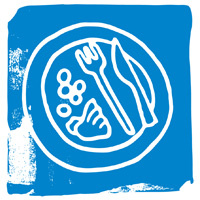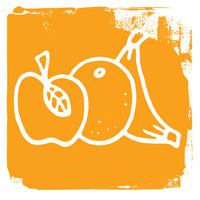With a new year comes tons of resolutions. Most people vow to lose weight with lots of exercising, but they forget to change their diet to accommodate their workouts. While a healthy diet can help shed pounds effectively, eating healthy doesn’t mean you have to deprive yourself. A healthy diet should leave you feeling energized and stabilize your mood, not to mention satisfied. With thousands of diets out on the market we recommend choosing from one of the four diets: low-fat diet, low-carb diet, low-sodium diet, and high-fiber diet.

When you combine the primary principles of each of these very basic diet ideals, you get a pretty well-rounded healthful approach to eating that can be summarized as “Paleo-ish,” according to Biggest Loser dietitian Cheryl Forberg, RD. Since you are eating no grains (low carb), no dairy (lower fat), nothing processed (no added sodium), and unlimited fruits and vegetables (high fiber) it becomes strikingly similar to the Paleo, or caveman, diet.
Bonnie Taub-Dix, author of Read It Before You Eat It and nutrition expert in New York, also commented on how all four diets could work well together if one chooses to eat a low–fat, low-carb, low-sodium, and high-fiber diet.
“We have a diabetes epidemic and a high-fiber and low-carb diet can help control blood sugar levels. There is a large percentage of people with diabetes who should keep an eye on sodium and fat intake because eating a low-fat and -sodium diet can control heart disease and blood pressure.”
Learn more about each of these diets and see how one or some might suit your health and weight loss goals.
A low-fat diet can help improve a dieter’s health drastically. Not only will a low-fat diet help you lose a significant amount of weight, but it can have a positive affect on the heart. Low-fat diets can help reduce heart disease, obesity related illnesses, and high cholesterol and blood pressure. A low-fat diet means restricting yourself from unhealthy amounts of fat and replacing them with fresh foods, whole grains, and lean proteins. Avoid animal fats in dairy and red meat; instead eat monounsaturated fats found in plant sources like nuts, avocados, and olive oil.
The low-carb diet was first introduced in the 1970s, but didn’t gain popularity until the 1990s when Dr. Atkins showed the benefits of the diet. Evidence from research and science prove that a low-carb diet can help dieters lose weight effectively, lower cholesterol, and increase energy. Once the body burned all of its carbs, it uses fat for energy, thus fat is burned to give your body energy it needs. This is how weight-loss is achieved. In order to maintain a low-carb diet eliminate white bread, pasta, fruits, and sweets. There is a lot of debate over the long-term efficacy of this style of diet, with it leading to carb confusion and even heart disease because of the inclusion of animal fats in the diet.
Avoiding sodium seems impossible, especially if you eat a lot of pre-packaged or fast food. If you are more aware of your sodium intake by reading food labels then a low-sodium diet will be good for your health. Dieters on a low-sodium diet should eat less than 2,000 mg a day. To maintain that, cook with fresh produce and use fresh herbs to add flavor instead of a salt shaker. You also have to remove salt from baked foods and replace butter and cheese with the unsalted or low-sodium varieties. Also, avoid packaged and processed foods because those are highest in sodium and will ruin your efforts.
Fiber can have a positive impact on your health. Eating a healthy amount of fiber can help dieters lose weight, manage diabetes, prevent colon cancer, and maintain blood sugar levels. Plus, fiber makes you feel fuller, which will make you less likely to be hungry and eat an unhealthy snack. Achieving a high-fiber diet simply by adding 25 more grams of fiber to your diet each day. Do this with whole grains (like rice and quinoa), fresh fruits and vegetables, and beans. Eliminate processed and fast food because they are typically void of fiber.
To ensure that you will have a healthy new year, you have to have a healthy diet. You want it to be realistic and not temporary. Taub-Dix leaves us with a little advice to take to heart.
“You want a diet you can follow for a lifetime, not a for a week or when you are ready for a new resolution.”
Also Read:
2, 466 Pounds Lost by True Weight Loss Story Members in 2025!


 Low-Carb Diet
Low-Carb Diet Low-Sodium Diet
Low-Sodium Diet High-Fiber Diet
High-Fiber Diet